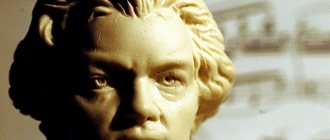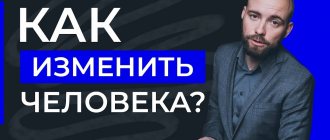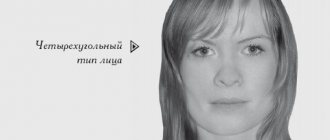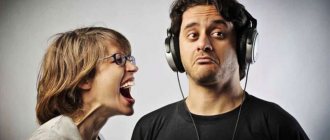This is one of the secrets of imagery.
Everyone learns the patterns of behavior that bring success. The more objective the idea of your behavior, based on people’s reactions, the more effective the strategy and tactics of this behavior will be.
In everyday life, we perceive the behavior of another person as a holistic image. When expressing our position, we do this simultaneously through a variety of means. Thus, wanting to show sympathy for a person, we, as a rule, will not only tell him about our feelings, but also convey them in soft intonations of the voice, in a friendly look. This complex of signs forms a model or, as psychologists say, a pattern of behavior. The model is perceived as a single whole.
For example, authoritarian behavior includes peremptory judgments, a categorical tone, and characteristic gestures. When we see a person behaving this way, we draw appropriate conclusions for ourselves.
The integrity of the model is violated when its constituent elements contradict each other; for example, sad news that is spoken of with an ironic intonation.
In life, each behavior model is embodied differently in different people. Most behavior patterns in everyday life are not the object of special study, but among the many models there are those that are comprehended by people and become the subject of special study. These are etiquette models (prescriptions) and strategic models.
Etiquette models are characteristic of every profession. For example, the ethical attitudes required towards an enemy and a diplomat differ. If we thoroughly know the ethical requirements, then the question arises: how to achieve this standard, by what means? The answer to this question is provided by the strategic model.
Strategic models are actually recommendations on how to behave in order to achieve a particular goal. We invent a certain strategy of behavior, think about what words to say to the interlocutor in order to convince him that we are right, how to show him a readiness to cooperate, how to win his sympathy, etc.
Fundamentals of Institutional Economics
Consumer society has made us feel the happiness of owning things, but has failed to teach us the happiness of not owning.
Alice BOULDING
1. Basic concepts
“Economic man” (Latin: Homo economicus) is an individual with high economic intuition and knowledge, who makes rational economic decisions and strives to obtain the greatest benefit. The model of “economic man” implies that all economic processes are based on human egoism, and the common good spontaneously develops as a result of the independent actions of individual individuals, each of whom strives to rationally maximize his own benefit. But in Adam Smith's understanding, this is not just a rational egoist, but an egoist with empathy who knows what needs to be done for another in order to benefit himself.
Human capital is, in a broad sense, a set of innate abilities, talents, as well as knowledge, skills, abilities, and personal qualities obtained and formed as a result of investments, which can potentially generate income for their owner.
Labor resources can be transformed into human capital provided they are involved in social production and used effectively.
Investments in human capital are investments in the form of time, effort and financial resources for training, special training, adaptation, development of individual qualities, etc. They bring a long-term, significant and quantifiable socio-economic effect, therefore they are the most beneficial from the point of view of an individual, an enterprise and society.
The principle of methodological individualism (PMI) is an axiomatic position that establishes the conditions for studying human economic behavior, based on the fact that he always makes economic decisions himself, regardless of what they are aimed at and how they are determined.
“Institutional man” is an individual who acts within the framework determined by laws and social norms, and in his behavior is guided not by interests, but by institutions: codes of conduct, contracts, laws.
A biological metaphor is the application of the principles of natural selection and other mechanisms that regulate the behavior of living beings in nature to the activities of economic entities.
Bounded rationality is the insufficiency of intellectual, time and other capabilities of economic agents to process information.
Information asymmetry is a manifestation of uneven distribution of information between the parties to a transaction. Information asymmetry creates opportunities for abuse and the risk of misconduct. An example is the principal-agent problem.
Opportunistic behavior is the pursuit of personal interest using unethical forms of behavior: lying, fraud, providing incomplete or unreliable information, etc. Such behavior is not limited by moral considerations, using deception, cunning, and deceit.
Shiking is a form of opportunistic behavior that involves working with less dedication and responsibility than expected under the terms of the contract.
The free-rider problem is the difficulty of implementing mutually beneficial collective actions due to the possibility of economic agents receiving benefits without participating in common costs.
The hysteresis effect is a stable pattern showing that entering a certain state is easier than leaving it.
2. Modeling as a method of cognition in institutionalism
Human behavior in economics has attracted the attention of researchers since the emergence of economic science. “Economic science, on the one hand, is the study of wealth, and on the other, forms part of the study of man.”
Attempts to explain the behavior of a producer (employee), entrepreneur, and consumer have been made by different researchers throughout the existence of economic science, but there is no unity in the interpretation of human economic behavior. The desire to identify patterns in human economic behavior led to the emergence of models of economic behavior.
The concept of a model is defined as “... a means of imagination that helps us imagine, depict or understand what is happening... A model is the creation of something acting in the direction of the future, something that at the time of creating the model or considering it has not yet been achieved... Models are not just a piece of technology for creating the future and not just useful tools, but the very ways of doing things that actually create the future.” That is, a model is a simplified representation, an abstract generalization that allows one to implement the practical (pragmatic) and predictive functions of economic science.
3. Methodological individualism
The ancient Greek philosophers Socrates, Plato, Aristotle, the English philosophers T. Hobbes, J. Locke, B. de Mandeville, the French F-M.A. Voltaire, J. -J. Rousseau.
But only at the turn of the 18th–19th centuries, within the framework of classical political economy, primarily the works of Adam Smith (1723–1790), under the influence of the ideas of the English philosopher Jeremy Bentham (1748–1832) and other thinkers of the Enlightenment, a model of “economic man” (Homo economicus). The author of the philosophical concept of utilitarianism, Bentham, considered benefit to be the basis of human behavior. The predecessor of such ideas in England was W. Petty, and the followers were: T. Malthus, D. Ricardo, J.-B. Say, J. St. Mill.
In economic theory, homo economicus is “just a person,” regardless of gender, age, nationality, religion, physical and intellectual capabilities, or emotional makeup. It operates in an abstract environment, which is a set of economic goods, and pursues the goal of maximizing individual utility. Homo economicus is interpreted as an isolated subject who interacts with the outside world and enters into economic relations with other people only in order to increase the stock of goods at his disposal. To study the command of homo economicus, economists began to use the “Robinsonade” model derived from it (named after the hero of the novel by D. Defoe Robinson, who found himself on a desert island, a similar situation with a hermit in the desert). Although this situation is in principle fictitious, it shows how an isolated individual interacts with the outside world - a source of food and other vital benefits. In particular, one of the founders of marginalism, and accordingly neoclassical theory, Carl Menger, developed the concept of marginal utility precisely with the help of “Robinsonade”. Subsequently, this model, with certain modifications, was included in neoclassical theory.
Characteristics of the homo economicus model:
– the desire to obtain maximum profit with the available means of production and available resources;
– ability to rationally calculate income and costs;
– constant desire to improve one’s well-being;
– the desire to minimize the risk inevitable in economic activity.
– understanding that you can make a profit and improve your well-being only by satisfying the needs of another, that is, having a sense of empathy (empathy is understanding the state of another person).
Deliberately ignoring individual, national, social and other characteristics of a person, the homo economicus model is naturally simplified and abstract. But supporters of this concept consider it timeless and fair for any historical era and country, considering the abstractness of the model an inevitable price to pay for its universality.
The homo economicus model of human economic behavior was formulated during the development of industrial capitalism, in conditions of accessibility and free information. Subsequently, it underwent significant changes
In 1960–70 Nobel laureates J. Stigler, G. Simon, and others formulated the ideas of paid information and the limited rationality of an economic subject who is not able to make optimal decisions from an abstract point of view due to ignorance of all circumstances and connections.
In the same period, E. Toffler drew attention to the fact that information is a very specific benefit: it not only has the ability to spread instantly, but more importantly, it can simultaneously be owned by many market entities. Therefore, the dissemination of information among market actors increases the aggregate knowledge of economic communities, that is, in essence, productively.
The standard neoclassical model portrays man as a hyperrational being. This model assumes that a person behaves completely rationally regarding the extraction of utility from economic goods. Therefore, in neoclassical theory there was no place at all for opportunistic behavior, since the possession of perfect information eliminates the possibility of opportunism.
The new extension of the model of economic man in “economics” was called REMM, based on the model proposed by W. Meckling and K. Brunner. This model assumes that a person is inclined to search and experiment, is able to evaluate different options, and always prefers more valuable options to less valuable ones.
Neo-institutional additions to the homo economicus model, first of all, reflect the fact of the limitations of human intelligence - the knowledge that a person has is always incomplete, his counting and predictive abilities are far from unlimited, and performing logical operations requires time and effort from him. Therefore, information is an expensive resource. Because of this, economic agents (actors) are forced to choose not optimal solutions, but those that seem acceptable to them based on the limited information they have. The rationality of agents will be expressed in the desire to save not only on material costs, but also on their intellectual efforts. All other things being equal, they will prefer solutions that place fewer demands on their predictive and computational capabilities.
As Oliver Williamson emphasizes, limitedly intelligent beings of imperfect morality need social institutions. In the absence of problems of bounded rationality and opportunistic behavior, the need for many institutions would simply disappear.
All these additions modified the homo economicus model in a certain way, but retained its main content, one of the most important axiomatic postulates of economic analysis - the principle of methodological individualism (PMI).
This principle states that the object of analysis is the behavior of an individual making decisions in a situation of economic choice.
The principle is purely methodological and has no relation to moral judgments, for example, to the assessment of human selfishness. For the researcher, the PMI establishes how to study economic behavior, arguing that a person always makes economic decisions himself, regardless of what they are aimed at and whether they are determined by scrupulous calculation, traditions or other factors. PMI is quite applicable to selfish actions aimed at obtaining personal gain, as well as various altruistic actions.
The main criticism of PMI blames it for its abstractness, ignoring the complexity of the motivation of human actions, and unwillingness to take into account human social connections.
Like all neoclassics in general, PMI views society as a mechanical collection of isolated individuals (“people in general”). But the whole is usually greater than the sum of its elements, because within the whole there are multiple connections between the elements. These connections give the whole a new content, which is not a simple sum of the individual elements it contains. As a result, within the framework of the whole, the elements themselves begin to function differently than they would have functioned in isolation. This is reflected in the principle of holism (from the Greek holos - whole).
Applying these principles to economic theory, we see that economic agents, as members of society, act differently from the isolated “economic man” of the neoclassicals (for example, Robinson). In addition, there are not so many Robinsons, and everything they use was created within the framework of socio-economic structures operating in holistic conditions. Therefore, PMI is still recognized in economic theory, but with the caveat that it reflects a deliberate simplification of reality.
Despite all the abstractness of the homo economicus model, it reflects very important ideological principles that form the ideological foundation of modern civilization:
– recognition of the intrinsic value of the human person;
– an unconditional right to well-being, including material well-being, which serves as the basis for personal development, creativity and transformation of the world.
These principles, dating back to the ideas of the Enlightenment philosophers of the 18th century, have not lost their relevance in our time.
4. Other human models
Neoclassicism is also opposed to other models of man, which usually proceed from different ideological premises, but claim to have a more versatile and full-blooded image of an economic object. Although often these models also suffer from abstractness, as well as strong ideological bias.
In the history of economic thought, a prominent place is occupied by the class model of man, developed by K. Marx and F. Engels, and first outlined by them in the “Manifesto of the Communist Party” (1848). According to the class model, a person's economic and social behavior is determined solely by the presence or absence of the means of production. It was by this criterion that all people were divided into exploiters (capitalists, bourgeoisie, etc.) and exploited (the proletariat and other poor exploited social groups). The former are motivated solely by the interests of profit and exploitation of others, while the latter seek to ease the burden of oppression and ultimately end inequality and exploitation. Accordingly, only negative human characteristics were attributed to the former, and positive ones to the latter. In addition, classical Marxism fundamentally rejected national motivation, for example, the unification of exploiters and exploited on a patriotic basis: the slogan “The proletariat has no fatherland!” – one of the main ones in Marxism. True, modern followers of Marxism have adopted nationalism as the basis of their platform, for example, the “Orthodox communists” in Russia, or the followers of Juche ideas in North Korea. But in the century and a half after the appearance of the “Manifesto of the Communist Party,” both the development of theory and historical practice showed the inconsistency of the doctrine of Marxism.
The model of the Soviet man was derived from Marxism, which dominated politically in our country for more than 70 years. For many years, in one form or another, it dominated the ideology and social theory developing in the USSR and found its expression in the “Moral Code of the Builder of Communism,” which was included in the next Program of the CPSU adopted in 1961. The Soviet model required a person to fully devote his strength and abilities to work for the benefit of the whole society and the construction of communism.
But in different periods of the existence of the USSR, the degree of state ideological pressure on people was different. And starting from the mid-1960s, the desire of Soviet people to receive decent material rewards after decades of hardship was officially recognized as Soviet ideology. But despite the development of various forms of “material incentives,” their subordinate position in relation to labor for the sake of the interests of society, and in fact the state, still remained. In addition, the state, experiencing quite noticeable economic difficulties in ensuring an increase in the living standards of the population, began to allow, to one degree or another, self-employed labor. More significant and effective was the provision of limited amounts of means of production (land plots and summer cottages) to solve the “food problem.”
Therefore, it seems important to answer the question whether the homo economicus model, and therefore neoclassicism in general, is capable of describing the economic behavior of Soviet people. At first glance, it may seem that it did not correspond to the principle of profit (utility) maximization: the wages of workers and employees could vary within fixed limits, weakly correlating with the real labor contribution of workers. But most workers knew that they would receive a salary regardless of their actual work effort, and they usually did not work at full capacity. (That is, we can state a typical situation of production opportunism in the form of shirking). But this does not mean that workers did not maximize utility (profit). Since utility (profit) is the difference between revenue and costs, then with fixed revenue (wages), the rational behavior of an economic entity was precisely to minimize costs, that is, their labor efforts, and thereby obtain the maximum possible utility. This behavior of the Soviet man was fully consistent with the model of homo economicus, especially considering that in private life he was often guided by ordinary commercial principles and sought to obtain maximum utility (profit): growing vegetables and fruits on his plot for sale, engaging in private medical practice or tutoring schoolchildren and especially by applicants.
In modern science, the national-cultural model of man has become widespread, which asserts the priority of historically established social values as determinants (determinants) of economic behavior. According to this model, a person acts one way or another in accordance with his upbringing, traditions and culture of the society in which he lives. There are very significant differences between different cultures regarding compliance with laws, the relationship between state (public) care, personal initiative and other behavioral stereotypes that are of great importance for economic life.
For example, in some communities there is a tendency to break contracts for short-term gain, which is common due to a lack of contract culture, that is, the lack of a cultural pattern of honoring contracts. Such examples appeared en masse in our economy in the 1990s, actively giving rise to criminal forms of control over their implementation. From this it is often concluded that such societies cannot form Western-style capitalism, built on the principles of unconditional fulfillment of written and even oral agreements.
5. Rationalistic concept of human activity
According to the theory of institutionalism, an individual tends to act on the basis of self-sustaining norms (habits, stereotypes) and generally accepted practices - various “routines”. They serve as guides in a complex and changing world, the complete knowledge of which is inaccessible to humans. It can be argued that in the absence of institutions and “routines” the world would appear to a person as a chaotic collection of sensory data.
Institutionalism considers the fundamental incompleteness of human knowledge to be one of the defining characteristics of human economic behavior. It is only partially rational, as the principle of “bounded rationality” states, not maximizing utility, and also highly rigid (inflexible). One of the founders of institutionalism, T. Veblen, ironically compared the rational and hedonistic homo economicus of neoclassical theory with a “high-speed calculator of pleasures and pains.”
Modern institutional theory views norms and agreements not simply as a product of the efforts of small and large groups, but as a self-sufficient factor that develops according to its own logic and subordinates a person. In contrast to the understanding of homo economicus in the 18th–19th centuries, which was characterized as an individual making a free economic choice based on individual preferences, institutionalism views the modern economic subject as bound by a dense network of economic and social restrictions. But even in such a situation, we can talk about freedom of choice, since the subject himself decides to what extent to submit to restrictions.
Norms and attitudes always favor certain groups, that is, they have a local effect that does not necessarily contribute to maximizing the economy as a whole. On the contrary, they can lead society to a dead end, rewarding only a small group of people by redistributing national wealth, eating away future income and destroying irreplaceable natural resources.
But as the greatest economic philosopher of the 20th century, Friedrich von Hayek (1899–1992), showed, in the long term we can still look with optimism at the economic prospects of humanity: external constraints on human behavior in the form of norms, traditions and government laws are ultimately subject to competition in the same way as other economic goods. And only those restrictions that favor society as a whole remain in force as a result of evolutionary selection.
This position of F. Hayek is well illustrated by the history of our country in the 20th century: the set of restrictions that operated in the Soviet economy, as well as the lack of a renewal mechanism, led to a loss in competition with the market economy and the historical defeat of Marxism in Russia.
Therefore, the main difference between the understanding of homo economicus in the 21st century and its predecessors is that it changes in the process and thanks to economic activity. For the first time at the turn of the 19th–20th centuries, this circumstance was noted by T. Veblen in his work “The Theory of the Leisure Class.”
Veblen showed that demonstrative idleness and demonstrative wastefulness become the life attitudes of not only the leisure class, since the middle classes and various groups of the population strive to imitate the upper strata. The “law of conspicuous waste” becomes an inevitable element of monetary civilization. One of the most striking examples of monetary waste is clothing, which quickly becomes outdated, becomes unfashionable, good things are thrown away and replaced with new ones.
Thus, in a market economy, the ruling classes impose their views and behavior on the mass consumer. Norms and standards are fixed in society, distorting and complicating people’s behavior. They follow not rational principles and calculations, but “money canons”, principles of prestige and demonstrative behavior.
In the 1980s, the theory of rational expectations (TRE), developed by R. Lucas Jr. and others, drew attention to the inconsistency of the standard theory with common sense in the aspect that the economic entity always remains unchanged and does not learn from experience. TRO showed that, on the contrary, subjects adapt well to changes in the economic situation and are able to anticipate and therefore neutralize measures to regulate the market against their will.
But other schools insist that economic agents are not as free in their choice as they might seem, because in economics there is a hysteresis effect, when entering a certain state is easier than leaving it. Within the framework of economic theory, which dominated until the beginning of the 20th century, it was believed that economic theory analyzes only those aspects of human behavior that are related to the traditional objects of economic science: production resources, consumer goods, money. That is, the subject of economic theory remained material goods and money; only after the advent of marginalism, the task of economic theory was seen not simply in increasing wealth, but in studying ways to solve this problem in conditions of limited material resources.
But in the second half of the 20th century, Gary Becker (1930–2015) and a number of other institutional scientists were able to fundamentally push the boundaries of the subject of economic science, establishing its new understanding. “Scarcity and choice characterize all resources, no matter how their distribution takes place—through the political process (including decisions about which industries to tax, how quickly to expand the money supply, and whether to go to war), through the family (including choice spouse and family planning, determining the frequency of church attendance, the distribution of time between sleep and wakefulness) or the organization of scientific research (including the allocation of time and mental effort by scientists among various scientific problems."
This direction of institutionalism showed that many forms of human behavior - family relationships, crime, racial discrimination, political struggle, etc. – contain the same elements as traditional economic activities. For example, costs and profits, as, respectively, the expenditure of time, physical effort, nervous energy (negative utility) and satisfaction from the achieved result (utility); price as a subjective assessment of those goods that have to be given up for one purpose or another, and finally, competition in the market for services, ideas or political parties. Although these categories may not always receive a monetary value outside the framework of economics proper, they are, in principle, no different from their corresponding economic concepts. This trend in economic thought is called “economic imperialism.” But this direction of neo-institutionalism made it possible to achieve two significant scientific results:
1) the shaky authority of neoclassics was restored and it was shown that the correct use of neoclassical tools helps to successfully overcome the abstractness and apparent “isolation from life” of this theory;
2) economic methods of social analysis were developed, which are successfully used in sociology, political science, psychology and other sciences about human behavior.
By the end of the 20th century, these methods became part of the traditional research arsenal of economists. As a result, economics even began to claim the role of a “universal behavioral metatheory.” Such claims are certainly exaggerated, since human behavior in different spheres of life has significant specificity, but they reflect the real spread of the subject of economic science to those areas that have never previously been the object of analysis for economists.
In parallel with “economic imperialism” in the 20th century, the opposite process began - the penetration into economics of those sciences that were previously extremely far from it. The most noticeable phenomenon of this kind is the “biological metaphor” in economics, which appeared at the turn of the 20th century with T. Veblen, and in the 1930s and 40s it was developed in the works of J. Schumpeter and F. Hayek. It began to attract particular interest in the 1980s–1990s among representatives of evolutionary theory and the second wave of “old institutionalism.” The essence of the biological metaphor is the application of the principles of natural selection and other mechanisms that regulate the behavior of living beings to the activities of economic entities.
Two multidirectional trends in theoretical economics – the strengthening of “economic imperialism” and the emergence of the “biological metaphor” – clearly illustrate the constant breakdown of traditional barriers between sciences that took place in the 20th century, which in the future could lead to the formation of fundamentally new, not yet known branches of scientific knowledge and understanding of human activity.
6. The latest developments of Nobel laureate E. Deaton
The study of behavior, the structure of incentives, preferences, and human reactions to the economic environment is actively continuing. This is evidenced by the work of the 2015 Nobel Prize in Economics, E. Deaton, who received the prize with the wording “for the analysis of consumption, poverty and welfare.” A. Smith's fellow British-American economist Angus Stewart Deaton (Deaton, 10/19/1945) was born in Edinburgh (Scotland). Currently a professor at the Faculty of Economics at Princeton University (USA).
Three main areas of Deaton's research led to him being awarded the Nobel Prize:
1) a system for assessing demand for goods, which he developed together with Oxford University professor John Muellbauer in the 1980s;
2) studying the relationship between consumption and income, which Deaton did in the 1990s:
3) measuring living standards and poverty in developing countries in recent decades.
Deaton's major works: Economics and Consumer Behavior, Understanding Consumption, The Analysis of Household Surveys: A Microeconometric Approach to Development Policy, The Great Britain Debate Indian poverty" (The Great Indian Poverty Debate), "The Great Escape: Health, Wealth, and the Origins of Inequality".
1). "Almost perfect demand system"
In order to make serious economic decisions, for example, to reduce or increase the value added tax (VAT) on certain goods, it is necessary to calculate the effect of upcoming changes. Until the 1980s, economists used the “rational consumer” model, which included certain characteristics that described how, when and why people spend money.
However, Deaton and Muhlbauer showed that this model uses too rigid and unrealistic parameters and therefore does not accurately describe consumer behavior. Simply put, such people, whose behavior was explained by the formulas of the mid-20th century, almost do not exist. Together they developed a new formula for calculating the consumption of ordinary people, which is closer to modern reality - the “Almost Ideal Demand System” (AIDS). Deaton perfected it over the next 35 years. This formula is used, for example, in forecasting demand for new iPhones in specific countries or calculating changes in VAT on alcohol.
An “almost ideal demand system” describes how individual households distribute their spending on various goods in a limited period of time. Deaton's approach forced us to reconsider the basic models describing the dependence of consumption (and savings) on the level of income, which were created in the 1950s by macroeconomists M. Friedman and F. Modigliani. These models were based on an ideal “average consumer” whose spending changes depending on income trends at the national level.
Deaton proved that it is necessary to take into account individual characteristics of income and expenses, which are often radically different from the average.
2). "A lot of money - little happiness"
In September 2010, Deaton, along with another Nobel Prize winner, Israeli economist and psychologist Daniel Kahneman, published a study based on which they substantiated the conclusion that money brings happiness if the salary does not exceed $75 thousand per year (i.e. $6250 per year). month).
Using various testing systems, researchers have found that people earning less than $75,000 a year appreciate every salary increase and this makes them happier. For those who earn more, money ceases to be a source of everyday happiness. The authors conclude that to develop economic policies that reduce poverty and increase welfare, we first need to understand the principles of consumption at the individual level.
3). Develop emerging economies
In recent decades, Deaton has been most occupied with the problems of developing economies and the issue of eliminating poverty. He proposed calculating the poverty level and people's incomes based not only on official data, but also on the results of surveys and studies of household economics. In addition, Deaton debunked the myth of the so-called “poverty trap”: it has long been believed that people in developing countries cannot work efficiently because they consume too few calories. Since they consume few calories, they work little. And since they work little... And so in a circle.
However, Deaton proved that if starvation and malnutrition are indeed a consequence of insufficient income, then insufficient income in itself is not a consequence of starvation. In other words, people earn little money not because they eat little; other factors are to blame. Therefore, free food alone will not destroy the “poverty trap”. And, as a result, humanitarian aid in the form of food, which until recently was considered almost a panacea for the woes of developing countries, does not help people escape poverty. Understanding this has forced many international organizations to reconsider their assistance programs and make them more targeted and effective.
Marshall A. Principles of political economy. T.1. Per. from English – M.: Progress, 1983. P.56.
Wartofsky M. Models. Representation and scientific understanding. Per. from English – M.: Progress, 1988. P.114.
REMM /English – resourceful, evaluating, maximizing man/ – inventive, evaluating, maximizing person.
You can remember the Soviet joke-proverb - “They pretend that they pay us, and we pretend that we work.”
Hysteresis is a phenomenon, the essence of which is that a temporary change in one factor causes a long-term change in another. With hysteresis (Greek hysteresis - delay, lag), the effect persists even after the disappearance of the root cause.
Becker G. Economic analysis and human behavior // THESIS. 1993. No. 1. S.5.
Even the term “economists’ crusade” arose. But it should be noted that the “crusade” in the Western tradition is considered a noble and ascetic deed.
Kapelyushnikov R. Economic theory of property rights. M.: IMEMO AN USSR, 1990.
We carry out self-presentation consciously or unconsciously, directly or indirectly.
For example, we can do this directly by naming our status, country or city where we came from, and marital status when meeting a person.
Self-presentation can also be carried out indirectly, with the help of hints and statements (“the last time I was in Paris ...”), a suit, emphatically elegant or casual, certain manners and attributes.
Self-presentation in professional communication* is extremely important.
We should not forget that when choosing a model of behavior, we depend not so much on ourselves, but on many external circumstances. This does not relieve us from personal responsibility for our behavior.
Sex role behavior
Gender-role behavior is behavior that is characteristic of people of a particular gender and is associated with the main social roles performed by these people in the life of any society.
Mass, group and sex-role behavior are characteristic of groups and individuals and depend on what social functions they perform and what goals they pursue. The following types of social behavior describe a person in the process of his interaction with other individuals.
What are the criteria for choosing a behavior model?
1. Moral integrity. Despite our tendency to subjectively interpret morality in society, there are generally accepted approaches to explaining concepts such as honesty, justice and conscience.
2. Compliance with the law and the established order in society. One of the tenets of ancient Roman law said: “Man is a sacred thing.” Any encroachment on him was unacceptable. Since it came from the people themselves, they were ordered to build their relationships in strict accordance with the spirit and letter of the law.
3. Taking into account the specific situation in which the person acts or finds himself by coincidence
4. The goal that the individual sets for himself.
5. Self-critical assessment of one’s own capabilities for using a specific behavior model.
Any copying of someone else's style is very dangerous. Thus, a person with external defects cannot imitate beautiful movie characters or famous people - it will look unnatural and ridiculous.
6. Gender of the individual. It is recommended to exhibit those qualities that are expected from either women or men. Thus, men value in a woman not only external attractiveness, but also a certain touch of eroticism. Women, knowing such programming of the male psyche, cannot help but take this into account. In turn, men should not forget that women consider their most attractive qualities not only intellectual originality and spiritual nobility, but also purely masculine strength and charm.
Women and men have enormous opportunities for non-standard choice of behavior patterns, bringing their natural charm into communication, but they often forget about this.
Women are usually in a more difficult position. After all, many men are reluctant to accept their leadership and are not at all impartial about their professional abilities. As a rule, in order for a woman to achieve at least half of what men achieve, she needs to know and be able to do twice as much. At the same time, men should be warned against inflated self-esteem.
According to management experts, there is a critical shortage of male leaders in the United States today. Other countries are also experiencing this shortage. Nowadays, women are also successfully claiming the role of leaders.
Skillful use of criteria for choosing behavior models along with skillful entry into one’s life roles is one of the most important provisions of imageology.
Problem behavior
Problem behavior refers to any behavior that causes psychological problems in a person. In most cases, problem behavior consists of behaviors that are incomprehensible and unacceptable to others and may be maladaptive, destructive, or antisocial.
In addition to other forms of social behavior, one can also find those that characterize close relationships between people. These types are attachment behavior and maternal behavior.
For example, in our lives there are always certain stable parameters of behavior.
So, some, getting up in the morning,
start the day with physical exercise. During the day we perform a number of the same actions. Thus, there is a specific set of everyday behaviors. This does not exclude the “wedging” into them of some other behavior patterns determined by the specific situation.
The choice of a behavior model (from the French modele - sample) does not imply any insensitive standardization of human actions, i.e. lack of a lively temperament, originality of thinking, originality, habits. The choice of a behavior model is the reproduction of such options that, in everyday communication, help an individual become sociable, and therefore attractive.
With the typology of behavioral models, it is possible to distinguish behavioral models in official and informal communication (family, friendly, everyday). Patterns of behavior can be active (aggressive) or passive (defensive) in nature.
The business sphere is the most diverse sphere of communication. Its characteristic feature is that in it all subjects of communication appear in official statuses, which inevitably determine the choice of their behavior patterns. As a result, its participants are focused on achieving some kind of business effect.
In foreign practice, there is no doubt about the mandatory creation of the image of a company or business person.
Such an attitude towards him is “built into” the mentality of people, regardless of their place on the career ladder. Image acts as an integral part of the culture of business communication.
Competitive Behavior
Competitive behavior is when people around him are perceived by a person as potential or real competitors, and he enters into struggle or competition with them. This behavior is designed to achieve advantage and victory. type A behavior is associated with competitive behavior , according to which a person is impatient, irritable, hostile and distrustful, and B behavior , according to which a person does not seek to compete with anyone and expresses a friendly attitude to everyone.
Other forms of social behavior
The desire for success is a special form of social behavior that influences a person’s success and, to a certain extent, his fate. The desire for success was most developed in the last century, and today it characterizes a huge number of successful people.
Avoiding failure is an alternative form of striving for success. This type of behavior manifests itself in a concern about not being last among other people, not being worse than them, not becoming a loser.
We can also distinguish such types of social behavior as the desire to communicate with other people and its opposite – avoidance of people. A separate form can be called the desire for power and the desire to maintain power , if a person already has it. The opposite of the last two is the desire for submission.
Another form of social behavior that scientists have paid attention to is confident behavior, when a person is self-confident, strives for new achievements, sets new tasks for himself, solves them and achieves new results.
However, it is quite common to see how capable people who want to achieve success and have the ability to do so fail due to uncertainty and excessive anxiety in cases where they should not have been shown. This behavior is called helpless behavior , and is defined as behavior in which a person, having everything he needs to achieve success, remains inactive, thereby dooming himself to failure.
Rules of good manners for men
An intelligent man should be dressed tastefully and appropriately for the occasion. His communication with the female sex is accompanied by calm speech without rudeness or harsh tone. He is always ready to help a woman, regardless of whether she is close to him or not. It is not difficult for him to give a woman or girl his hand when exiting a vehicle, to help a neighbor carry heavy bags to the door, to open the door for her when entering a room, etc.
A man needs to be attentive to a woman's needs. But even when communicating with other men, he must be polite, not show his superiority and not praise himself. He must resolve all controversial issues delicately, avoiding conflict situations.
He has an innate sense of justice towards all people, regardless of rank and status in society. He values the work, time and effort of other people, he has a sense of self-esteem and a respectful attitude towards others.
The main rules that a man must follow:
- By inviting someone to a cafe or restaurant, a man implies that he is ready to bear all the expenses himself.
- When walking with a woman, the man should walk to her left. Only those who are military may be on the right to be able to salute if the need arises.
- The woman should always enter the room first, and the man should let her go first.
- After getting out of the car, the man is obliged to open the door to the woman and give her his hand.
- A man should help a woman put on her outerwear before leaving the room and hold her handbag if necessary.
Strict adherence by a person to established norms of behavior characterizes him as a conscious and responsible individual.
Tactics
Each strategy corresponds to a specific set of tactics.
Rivalry:
- strict control over the actions and sources of information of the other party;
- systematic pressure (physical, psychological, moral);
- deception, flattery, manipulation, cunning, “set-ups”, provocations;
- refusal to make contact, to discuss anything (the person adheres to the position “I have my opinion and it’s wrong - there’s nothing to discuss”).
Evasion:
- demonstrative avoidance of discussion (“I was offended”, “don’t touch me”);
- refusal to use physical force;
- ignorance and mistrust, refusal to collect information and analyze facts;
- shifting responsibility;
- delaying decision making;
- denial of the conflict.
Compromise:
- bargaining and discussion of problems, active negotiations;
- deception and flattery (needed to convince an opponent that he has certain qualities).
There is an attitude towards equal sharing of benefits.
Device:
- agreement in everything, constant concessions;
- demonstrative reluctance to enter into confrontation;
- flattery, servility, indulgence.
Cooperation:
- collecting information about the opponent, problem, conflict;
- analysis of your resources and the capabilities of your opponent;
- selection and presentation of alternative solutions;
- open discussion identifying specific problems;
- listening and accepting the opponent’s position.
Etiquette for women
Representatives of the fair sex have their own general rules of behavior. A woman should be able to present herself. This skill means maintaining a feminine manner of behavior and communication, and the ability to dress beautifully and tastefully.
She must be able to build a dialogue, show tact and respect for others. A woman should maintain an even posture and be able to walk gracefully. She must be able to properly show signs of attention to men.
Frivolous behavior is not characteristic of a well-mannered woman: open flirtation and intrusiveness will be inappropriate in communication with men and can cause a negative reaction.
When communicating with a man, a woman needs to be polite and tactful, but at the same time keep her distance and know her rights. She has the right to refuse intrusive advances and let the man know that he is crossing acceptable boundaries.
Women who are prone to violent expressions of emotions must be able to restrain them at the right moment and hide their negative attitude towards something: do not use obscene language or a raised tone in conversation. In some cases, a strong manifestation of joyful emotions is also considered bad form.
Rules for women:
- It is not recommended to wear mittens and a hat indoors, but gloves and a hat are allowed.
- Bright and provocative make-up should only be applied when going to a party.
- An important point is the correct use of perfume: if a woman smells her perfume, this means that there is a lot of it.
- You should select and combine jewelry wisely. Rings may not be worn over gloves, but a bracelet may be worn. The largest number of decorations (including decorative buttons) should be no more than 13 items.
Maternal behavior
In general, maternal behavior is the behavior inherent in mothers in relation to their children, as well as the behavior of any person in general, which is similar to the behavior of a mother in relation to a child.
There are also some other forms of social behavior that are interconnected with the relationships of people developing in society. Such behavior can be called behavior the purpose of which is to avoid failures and achieve success, gain power or subordination to someone; confident or helpless behavior, as well as some others.










